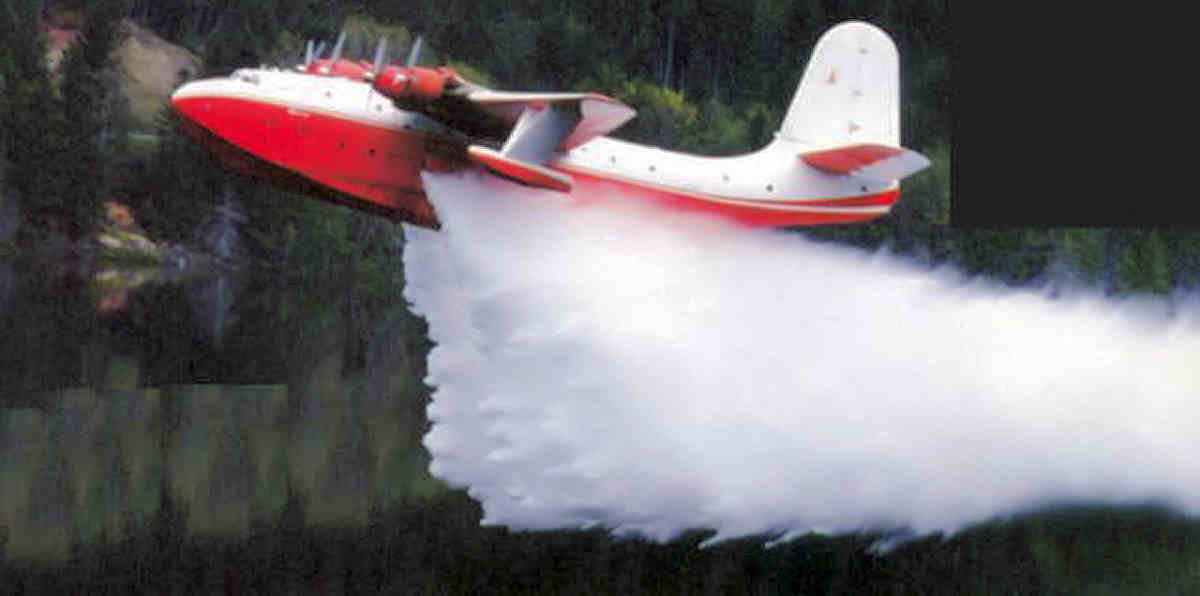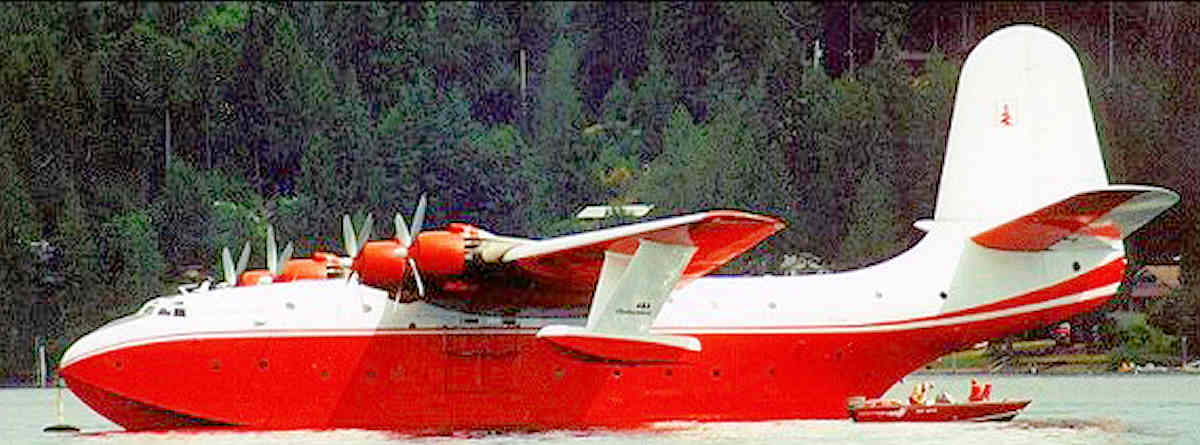MARS WATER
BOMBERS
* In the late 1950s, the
Canadian Pacific-coast province of British Columbia was badly hit by a
series of forest fires, and in 1958 the lumber companies met to discuss
what to do in response. One of the recommendations was to make greater
use of "water bombers" -- aircraft converted to dump water on fires.
Unfortunately, existing
aircraft types used as water bombers, such as Beavers, Otters, Avengers
and so on, couldn't carry enough water to really dowse a fire. A
water-bomber pilot named Dan McIvor suggested that using surplus flying
boats would give the fire-fighters the clout they needed. However, big
flying boats were a thing of the past and most of them had been
scrapped.
In the spring of 1959,
McIvor learned that the US Navy intended to sell its huge Mars flying
boats for scrap. McIvor knew that the Mars would be the best water
bomber of all the aircraft he had considered, and called the Navy
immediately. The bids had been closed, but the Navy gave McIvor the
name of the winning bidder. McIvor called them and arranged to buy the
four aircraft for a slight markup over their bid, paying the remarkably
cheap sum of $100,000 US for all four. McIvor was apparently quite an
energetic guy, as he then managed not only to acquire spare engines and
the entire Navy parts stock and documentation archive for the archive
for a small sum.
The four JRMs were flown to
British Columbia during August and September 1959. The Caroline Mars
was pressed into service for training, while the Marianas Mars was
being converted into a water bomber by Fairey Aviation. All extraneous
gear was stripped out, a single 22,700 liter (6,000 US gallon)
fiberglassed-plywood tank was installed, and two retractable scoops
were built into the hull. New radio equipment and a spiffy
red-and-white paint scheme completed the upgrade.
The Marianas Mars began its
service in spring 1960. Unfortunately, McIvor ended up being grounded
because of his eyesight, and his replacements weren't nearly as
capable. On 23 June 1960, a pilot named Richman failed to heed the
recommendations of an observer on a spotter aircraft and cartwheeled
the Marianas Mars through the treetops, killing himself and the other
three crewmen.
As a result, the
conversion of the Caroline Mars to a water bomber was accelerated. In
1962 McIvor, who had got his license back on appeal, demonstrated the
wisdom of his selection of the Mars flying boats by putting out a
serious fire with the Caroline Mars before ground crews even managed to
get to the scene. Unfortunately, the Caroline Mars was completely
wrecked by a storm that winter.
That left the Philippine
Mars and the Hawaii Mars. Fairey Aviation immediately proceeded to
convert them to water bombers as they had the other two aircraft. They
also added a new secondary tank to contain "Gelgard", a thickening
agent that was added to the water to make it viscous and not run off so
quickly. The two water bombers went into service during the fire season
in 1963, and at last notice remain in service, operating off Sproat
Lake in British Columbia. From: Vectors
|



